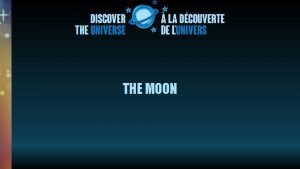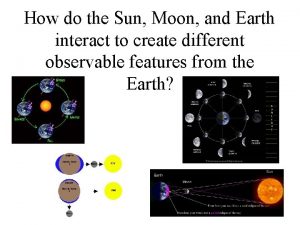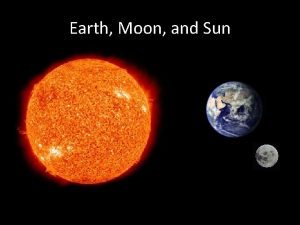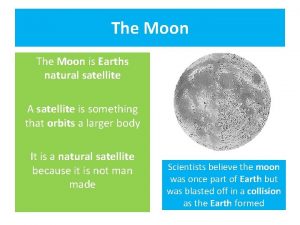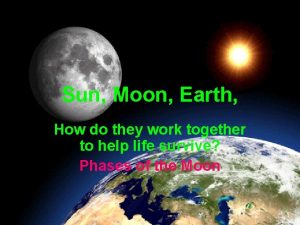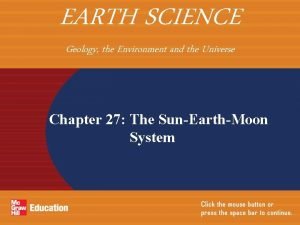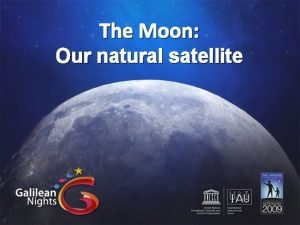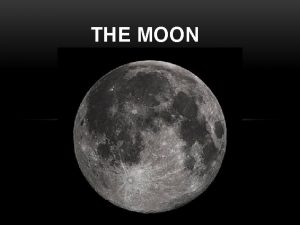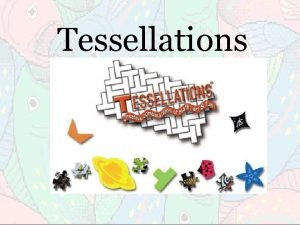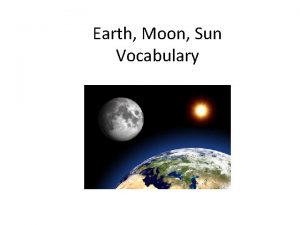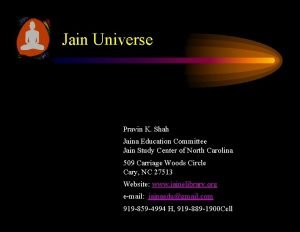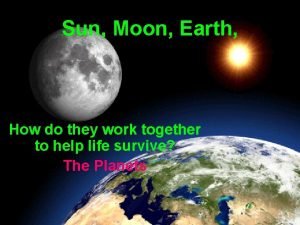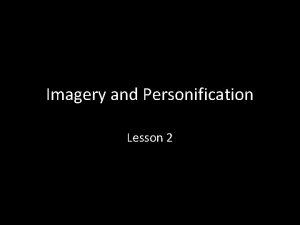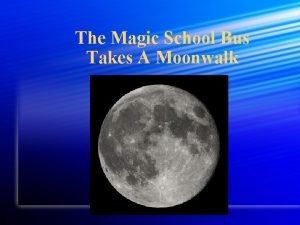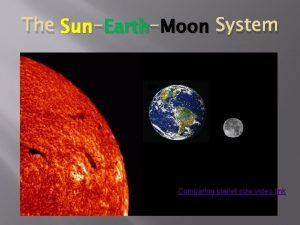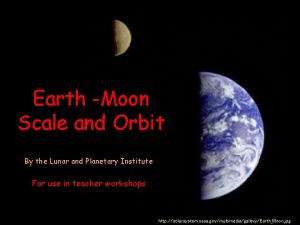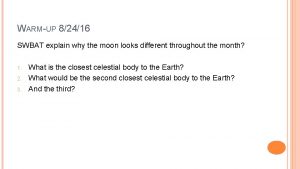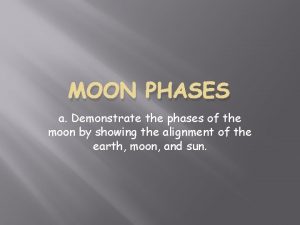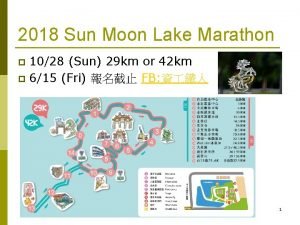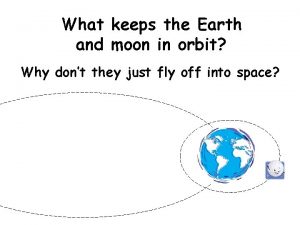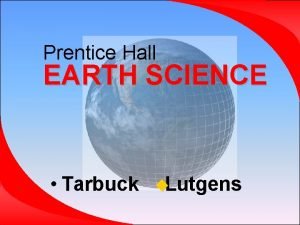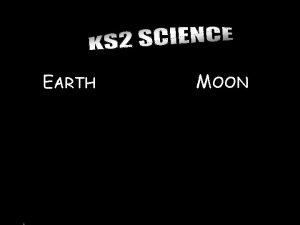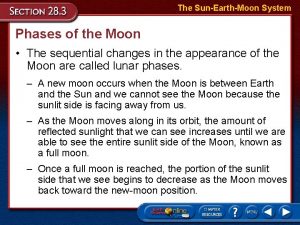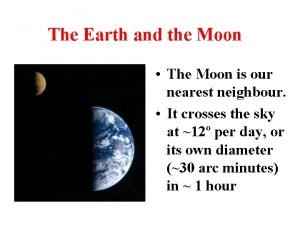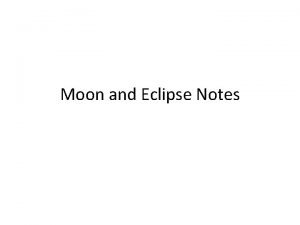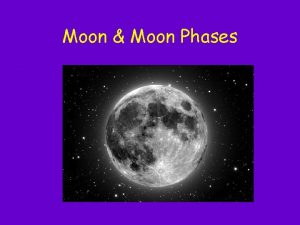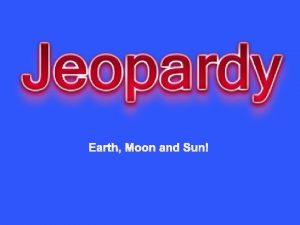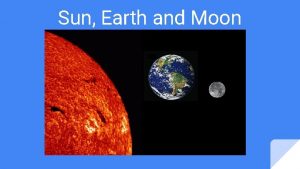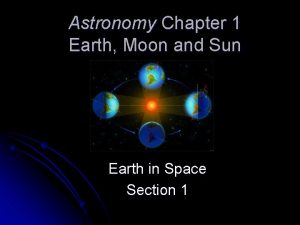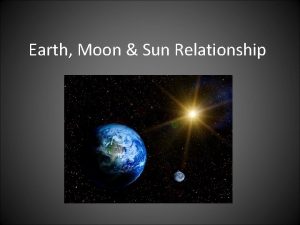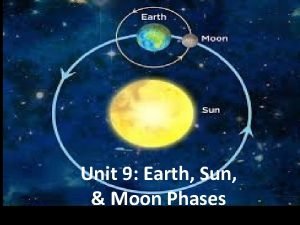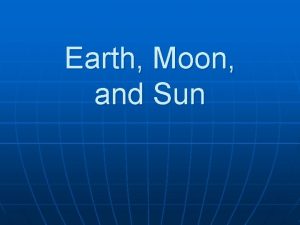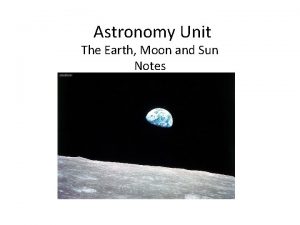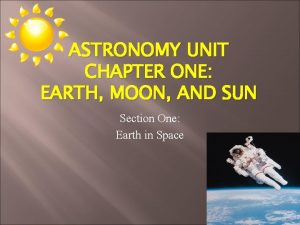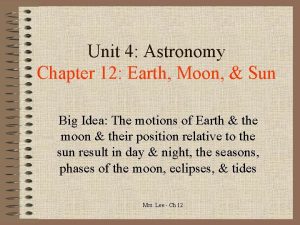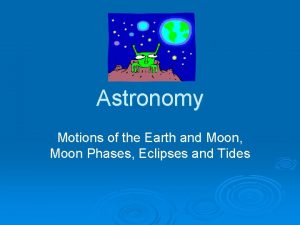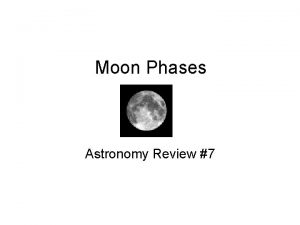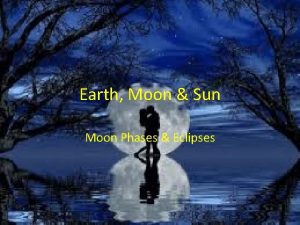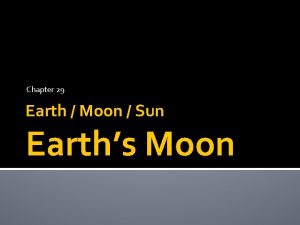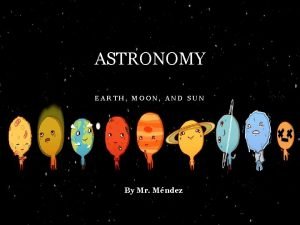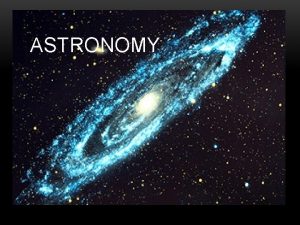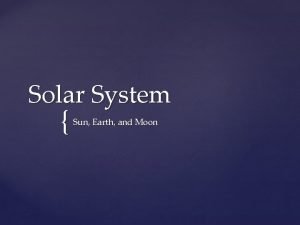Unit 1 Astronomy Earth Sun and Moon Interactions





































- Slides: 37

Unit 1 Astronomy Earth, Sun, and Moon Interactions

Revolution Move around an object; to orbit A path the Earth follows around the sun Takes 1 year or 365. 25 days for Earth to travel around the Sun Causes seasons

Rotation Spin/turn on an axis Earth’s tilt or axis is 23. 5⁰ from the equator One rotation = one solar day (24 hrs/day) Foucault Pendulum- evidence of Earth’s rotation on its axis

Plane of Ecliptic = the plane in which Earth orbits around the Sun

Solstice • Summer Solstice- • • Sun directly overhead at Tropic of Cancer 23. 5 ⁰ north latitude June 21 each year Maximum daylight hours in northern hemisphere • Winter Solstice- • • Tropic of Capricorn 23. 5 ⁰ south latitude December 21 each year Minimum daylight hours in northern hemisphere

Equinox Vernal (Spring) and Autumnal (Fall) Equinox • “Equal night”- 12 hours of daylight, 12 hours of night • Earth’s axis is NOT pointed at the Sun • Both hemispheres receive equal amounts of sunlight


Stop to Summarize 1. ) What’s the difference between rotation and revolution? 3. ) How does the Earth’s tilt influence the equinoxes and solstices?

Earth’s Shape OBLATE SHEROID A sphere flattened along the axis from pole to pole such that there is a bulge around the equator. This bulge results from the rotation of the Earth, and causes the diameter at the equator to be 43 km (kilometer) larger than the pole-to-pole diameter.

Precession • a gravity-induced, slow and continuous change in the orientation of a Earth’s rotational axis • Changes the stars near the Pole • axis is not fixed in space. Like a rotating toy top, the direction of the rotation axis executes a slow precession with a period of 26, 000 years

Nutation (WOBBLE) • a small irregularity of the equinoxes. • makes a small change to the angle at which the Earth tilts with respect to the Sun, changing the location of the major circles of latitude that are defined by the Earth's tilt • occurs over an 18 year period and caused exclusively by the moon

Barycenter is the center of mass of two or more bodies that are orbiting each other, or the point around which they both orbit • Center of gravity- The exact center of all the material (that is, mass) that makes up an object—whether a planet or a pencil • Earth and the Sun, both bodies orbit around the very center of the mass between them

Stop to Summarize 1. ) Do you think the Sun is stationary in our solar system? (think barycenter) 2. ) Explain the difference between precession and nutation

The Moon – Our Nearest Neighbor • A natural satellite • One of more than 96 moons in our Solar System • The only moon of the planet Earth

Movements of the Moon • Revolution – Moon orbits the Earth every 27 and 1/3 days • The moon rises in the east and sets in the west • The moon rises and sets 50 minutes later each day • Rotation – Moon turns on its axis every 27 days • Same side of Moon always faces Earth

It’s Just a Phase • Moonlight is reflected sunlight • Half the moon’s surface is always reflecting light • From Earth we see different amounts of the Moon’s lit surface • The amount seen is called a “phase”

FOUR MAIN SHAPES FULL QUARTER CRESCENT GIBBOUS


Phases of the Moon

Tides Moon affects Earth by the formation of tides u Moon’s gravity pulls on Earth along imaginary line connecting Earth and the Moon u creates bulges of ocean water on both the near and far sides of the Earth u Earth’s rotation contributes to tide formation u As Earth rotates, these bulges align with the Moon u

Tides Spring=Strong High tides are called spring tides and they are high when Moon is nearest Earth and Earth is nearest the Sun

Tides Neap= Weak

Solar Eclipses

Lunar Eclipses

The Closest Star- Our Sun

History of Our Sun • Worshipped as a deity (god) by many cultures throughout history • Called Helios by the Greeks • Called Ra by the Egyptians Helios, Greek god carrying the Sun to its position in the sky Ra, the god of the Sun

HELIO-centric=the Sun is at the center of our solar system NOT GEO-centric= the Earth is at the center of our solar system

Kepler’s Laws 1. ) The orbit of a planet is an ellipse with the Sun at one of the two foci. 2. ) A line segment joining a planet and the Sun sweeps out equal areas during equal intervals of time.

Why is the Sun important? • Temperature: supports most life on earth by providing warmth required for survival (exception: underwater hydrothermal vent ecosystems) • Photosynthesis: plants grow which in turn absorb carbon dioxide and create oxygen

How does the Sun produce light and heat? • Deep in the sun's core, nuclear fusion reactions convert hydrogen to helium, which generates energy. • Hydrogen atoms are fused together to create a helium and release a tremendous amount of energy

Sun’s Layers

How does the Sun produce light and heat? • Radioactive Zone: energy is transported from the superhot interior to the colder outer layer by photons, includes the core (85% of the Sun’s radius) • Convection Zone: more ions are able to block the outward flow of photo radiation (15% of the Sun’s radius) • LAVA LAMP- boiling motions of gases transfer the energy to the surface. This journey takes about 100, 000 years.

Outer Layers of the Sun 1. ) Photosphere: bottom layer of outer sun 2. ) Chromosphere: next layer above the photosphere 3. ) Corona: “crown” of light from the Sun

Features of the Sun – Prominence • Prominences are arcs of gas that are anchored in the photosphere layer of the Sun • Prominences extend through the corona layer of the Sun

Features of the Sun – Sunspots • Sunspots are small, dark spots seen on the surface of the Sun • Sunspots are caused by strong magnetic fields on the Sun’s surface • One sunspot has North magnetic polarity and one sunspot has South magnetic polarity. • Caused by the Sun’s rotation

Features of the Sun – Solar Wind • a stream of energized, charged particles • flowing outward from the Sun as plasma • Our magnetic field protects the Earth from the solar wind • Auroras are created as the solar wind’s charged particles interact with our magnetic field

Features of the Sun – Solar Flares • a sudden and intense variation in brightness from a magnetic energy build up • IMPACT: radiation from past solar flares has been responsible for; • disrupting satellites • stretching the visibility of the Aurora Borealis down to the tropics • causing electronics and cellular devices to fail • causing telegraph wires to burst into flames.
 Andreu cardo martinez
Andreu cardo martinez How does the moon earth and sun work together
How does the moon earth and sun work together What season is this
What season is this Sun earth
Sun earth New moon position of sun and earth
New moon position of sun and earth Sun and earth relationship
Sun and earth relationship How does the sun moon and earth work together
How does the sun moon and earth work together Learning astronomy by doing astronomy
Learning astronomy by doing astronomy Learning astronomy by doing astronomy activity 1 answers
Learning astronomy by doing astronomy activity 1 answers Learning astronomy by doing astronomy activity 1 answers
Learning astronomy by doing astronomy activity 1 answers Lesson outline lesson 3 eclipses and tides answer key
Lesson outline lesson 3 eclipses and tides answer key Earth moon
Earth moon Sphere interactions examples
Sphere interactions examples Astronomy definition earth science
Astronomy definition earth science Which moon phase occurs directly before a new moon
Which moon phase occurs directly before a new moon Which moon phase occurs directly before a new moon
Which moon phase occurs directly before a new moon Moon sister moon calendar
Moon sister moon calendar Home.hiwaay.net/ krcool/astro/moon/moon tides/
Home.hiwaay.net/ krcool/astro/moon/moon tides/ What phase is this
What phase is this Spider web tessellation
Spider web tessellation Moon
Moon Moon and sun comparison
Moon and sun comparison 14 rajlok in gujarati
14 rajlok in gujarati How the sun and moon work
How the sun and moon work Poem using visual imagery
Poem using visual imagery Magic school bus moon phases
Magic school bus moon phases Earth and sun size comparison
Earth and sun size comparison Earth moon to scale
Earth moon to scale Moon phases of the sun is on the right
Moon phases of the sun is on the right Moon phases when the sun is on the left
Moon phases when the sun is on the left Sun moon lake marathon
Sun moon lake marathon Cordillera administrative region riddles
Cordillera administrative region riddles Moonfall msv
Moonfall msv 22.3 earth's moon
22.3 earth's moon Moon compared to earth
Moon compared to earth Earth moon
Earth moon Earth moon
Earth moon The different shapes of the moon you see from earth
The different shapes of the moon you see from earth
